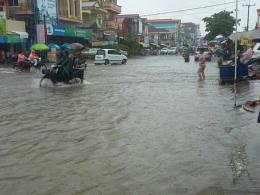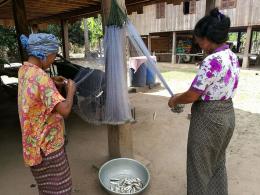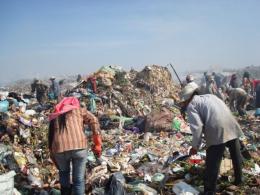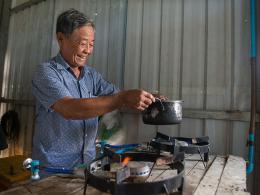Strengthening Country Capacity to Deal Effectively with Climate-Sensitive Vector-Borne and Water-Related Diseases and Reducing the Health Impacts (CC-Health)
Background
Cambodia is amongst the most vulnerable countries in South-East Asia to climate change and its health impacts, with seven of its provinces in the top 50 most vulnerable regions (Yusuf A 2010).
Vector-borne diseases (VBDs) such as dengue fever and malaria are particularly susceptible to climate change, due to climatic influences on the range, survival and behaviour of their insect vectors (mosquitoes) which transmit these pathogens to humans and influence on the replication of the virus (for dengue) and parasite (for malaria). In general, transmission dynamics favour warmer and wetter environments, such as the environment in many areas of Cambodia.
Threats from other VBDs beyond dengue and malaria are also a potential, such as Chikungunya and Zika virus. Recent reports of the presence of these diseases in regional countries and the fact that they are also transmitted by the same Aedes mosquitoes that transmits dengue, further increase the threat they pose.
There are also adverse effects and impacts of climate change on water quality (safety), water quantity (availability) and water-related diseases (WRDs). Cambodia already suffers from a significant burden of WRDs.
Overall Objective
The overall objective of project is to contribute to CC by enhancing control and prevention capacities at national and in selected high risk provinces against VBD and WRD outbreaks, reducing the health impacts of extreme weather events and identifying risks and vulnerable population groups in Cambodia. The project has two specific objectives:
- Enhanced vector-borne disease surveillance and response
- Increased capacity to manage and prevent water-related diseases
Expected Results
- Improved epidemiological and serological surveillance for dengue fever;
- Strengthened dengue lab capacity at the national level (one real time PCR machine, one ELISA machine with reagents);
- Information, Education, Communications for health professionals at district/community/village level;
- Improve meteorological surveillance and climate-based early warning;
- Entomological surveillance in areas of the project site with high dengue;
- Training and capacity building;
- Health professional education and training in: prevention, diagnosis and management of WRDs; applied epidemiological analysis; application of GIS for health.
Location
- Water-born diseases and disasters: Kandal, Siem Reap, Banteay Meanchey, Mondul Kiri, Rattanak Kiri, Battambang, Kampong Thom, Kampong Cham, Tboung Kmum, Kratie, Pursat, Stung Treng, Takeo, Prey Veng, Koh Kong, Preah Vihear, Sihanouk, Kampot, Kampong Speu province and Phnom Penh municipality.
- Vector-born diseases: Preah Vihear, Koh Kong, Rattanakiri, Mondul Kiri, Siem Reap, Banteay Meanchey, Tboung Kmum and Kandal Province.
Beneficiaries
- The population vulnerable to VBD transmission and WRDs will benefit from strengthening and expansion of existing VBD & WRD prevention and treatment services.
- Community awareness activities informing at risk populations of climate change risks and appropriate behavior to protect from VBDs and WRDs.
- Population vulnerable to extreme weather events in disaster prone provinces will benefit from preparedness interventions and awareness raising of disaster risks to health.
- Government ministerial staff and provincial staff will undergo appropriate training to enhance skills for improving climate change and health adaptation planning and response. Ministries will also participate in and gain from interactions in TWGs and associated meetings.
Approach
- Reduced risk of VBD transmission, burden of WRDs and health impacts of extreme weather events, along with improved case management of VBDs and WRDs resulting in lower case fatality rate in selected project sites.
- Improved understanding of associations between climate change and VBDs, WRDs and extreme weather events impacting health, as well as determinants of health and the utility of integrated early warning systems;
- National policy dialogue to include health as an important component of climate change adaptation, with VBDs, WRDs and extreme weather events impacting health as an example of a tangible adaptation strategy.






